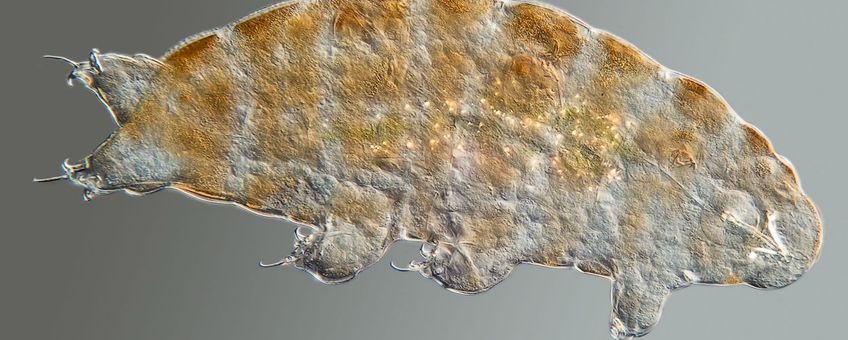
Tardigrades in the Netherlands: from 14 to 35 species, and this is just the beginning
Naturalis Biodiversity CenterFrom 14 to 35 recorded species: how did that happen so quickly? Hannco Bakker, collection manager of invertebrates at Naturalis, explains: “It all started with the discovery of a moving box belonging to Dutch nature photographer Jan van Arkel. Van Arkel studied tardigrades in the Netherlands until 2012. He had around 1028 glass slides, all neatly stored in a moving box.” The find not only tripled the existing tardigrade collection at Naturalis, but also expanded the number of officially registered Dutch species from 14 to 35. “Van Arkel also captured each species in stunning microscopic photographs”, Hannco adds. A simple moving box turned out to be full of scientific treasures.

Fascinating little creatures
At first glance, tardigrades look rather clumsy: plump, wobbly creatures with eight legs that shuffle along slowly. But their awkward appearance says nothing about their abilities. “Tardigrades are among the most resilient organisms on Earth. They can survive extreme heat and cold, high doses of radiation, and even long periods of dehydration”, Hannco explains. When dried out, these tiny creatures are so light that the wind can carry them for kilometers, allowing them to colonize new areas with ease. “They are found in mountain regions at over 6000 meters altitude and in the sea at nearly 5000 meters depth”, Hannco says. “But they do not skip Dutch gardens: with a bit of luck, you can find some of them in a small clump of moss!”
Knowledge for science
Van Arkel’s collection is exceptionally well-documented: over 1028 glass slides, complete with microscopic photos and precise descriptions. “This extensive documentation allows us to reliably record the species in the Dutch Species Register, the national authority on species knowledge”, Hannco explains.
But there is more to it than that. Since 2020, Naturalis has been working on a large-scale genetic database to record the DNA of all Dutch species, as part of the ARISE project. “The DNA of these newly identified tardigrades will also be added to that database”, Hannco continues. “Thanks to DNA registration, we can detect which species are present in an area from just a bit of soil or water, without having to see them with the naked eye first.” In this way, these tiny tardigrades make a big contribution to our understanding of Dutch biodiversity.

More information
- Microscopic video footage of tardigrades by Jan van Arkel.
- The registered Dutch tardigrade species in the Dutch Species Register.
- More about ARISE and the collection of DNA from all Dutch species (in Dutch).
Text: Rachel Engelkes & Hannco Bakker, Naturalis Biodiversity Center; Rykel de Bruyne, Stichting ANEMOON
Images: Jan van Arkel (lead image: Ramazzottius oberhaeuseri)
